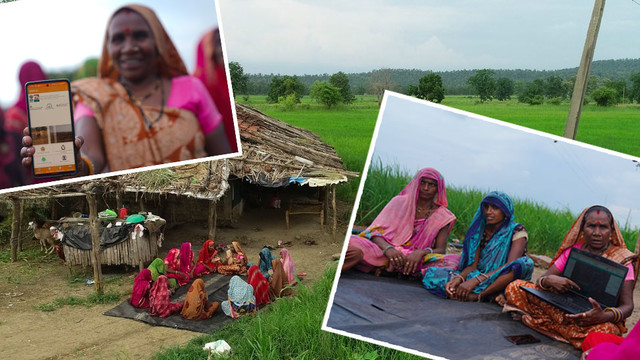What’s in a narrative? In policy, everything or nothing
Narrative means story, right? But not if you work on development policy, where narrative means something quite different: a framework for action, but one that can create problems if left to roll like a stone down a hill on its own.


Camels and their milk are at the core of cultural and pastoral life in the arid regions of the horn of Africa. The dominant policy narrative casts pastoralism as something that needs to be replaced. Photo: Copyright, Stephen Anderson
I discussed narratives this week with my IIED colleague Ced Hesse and two other experts on land, livestock and livelihoods: Saverio Krätli and Jeremy Swift.
We wanted to understand the policy narratives that describe pastoralism in Kenya, India and China, three countries where policies work against the mobility that herding communities use to take advantage of water and pasture that are patchily distributed in space and time.
The dominant policy narrative casts pastoralism as a backward, irrational livelihood that takes place in fragile unproductive ecosystems and creates a catalogue of problems for non-pastoralists. The narrative frames pastoralism as something that should be replaced. The pastoralists themselves would of course disagree, and research suggests that they will have a critical role to play – if allowed to – as our climate changes.
With funding from the Ford Foundation, we had gathered with specialists from the three countries to consider how modified narratives could help policymakers see the benefits of mobile pastoralism and how the sector can support climate-resilient development. But first we had to be sure we all understood narratives.
A scholar called Emery Roe developed the concept of development policy narratives in 1991, and it was his work that we drew on in our conversation.
According to Roe, such narratives are strategic simplifications that help policymaking in the face of situations whose complexity can instil policy paralysis. They generate consensus around major policies and make political action possible.
As simplifications, narratives are fundamentally different from scientific theories. Science, like narratives, needs to spread to become accepted, but science operates within a formal system that validates its findings, through publication of evidence, peer-review and replication.
"Scientific facts are falsifiable," said Jeremy Swift. "Narratives are not. They escape the checks and balances of science."
Narratives need the support of scientific authority but at the same time need to avoid the complexity and conditional nature of scientific knowledge and this is why they exist. As Krätli pointed out: “scientific knowledge could never be as convincing as a good narrative.”
Narratives can be fairly relevant representations of the situation they are designed to address. But like wide-angle camera lenses that capture a huge range of variety, the scenarios they produce are increasingly distorted at the edges.
"For those parts of reality that happen to be at the edges of the narrative -- like nomadic pastoralism in global narratives about agricultural development, food security, climate change -- the distortion can be so strong that the simplifying power of the narrative can be turned on its head," said Krätli. "It generates order at the centre of its focus but disorder at the edge."
The idea that economies of scale are always good, for instance, might be true for agriculture in a uniform and stable environment. But when resources such as water and pasture become available in unpredictable concentrations -- as in the rangelands where pastoralists herd their livestock -- then investments designed to capture economies of scale and static production systems can be a bad idea.
For pastoralists though, mobility is what solves problems. It is part of a rational, well-defined economic strategy that ensures higher productivity than static herding.
The media have a big role to play in correcting the many misconceptions that policymakers have about mobile pastoralism. But there is also a need for a modified policy narrative, which is what the project underway now hopes to develop.
This modified narrative might show how governments can make sensible decisions in the face of climate change and population growth by investing in pastoralism and, critically, in pastoralists on their own terms. Its true test will be if it creates a positive outcome to the more conventional narrative – the story of how pastoralists fare in the future.



